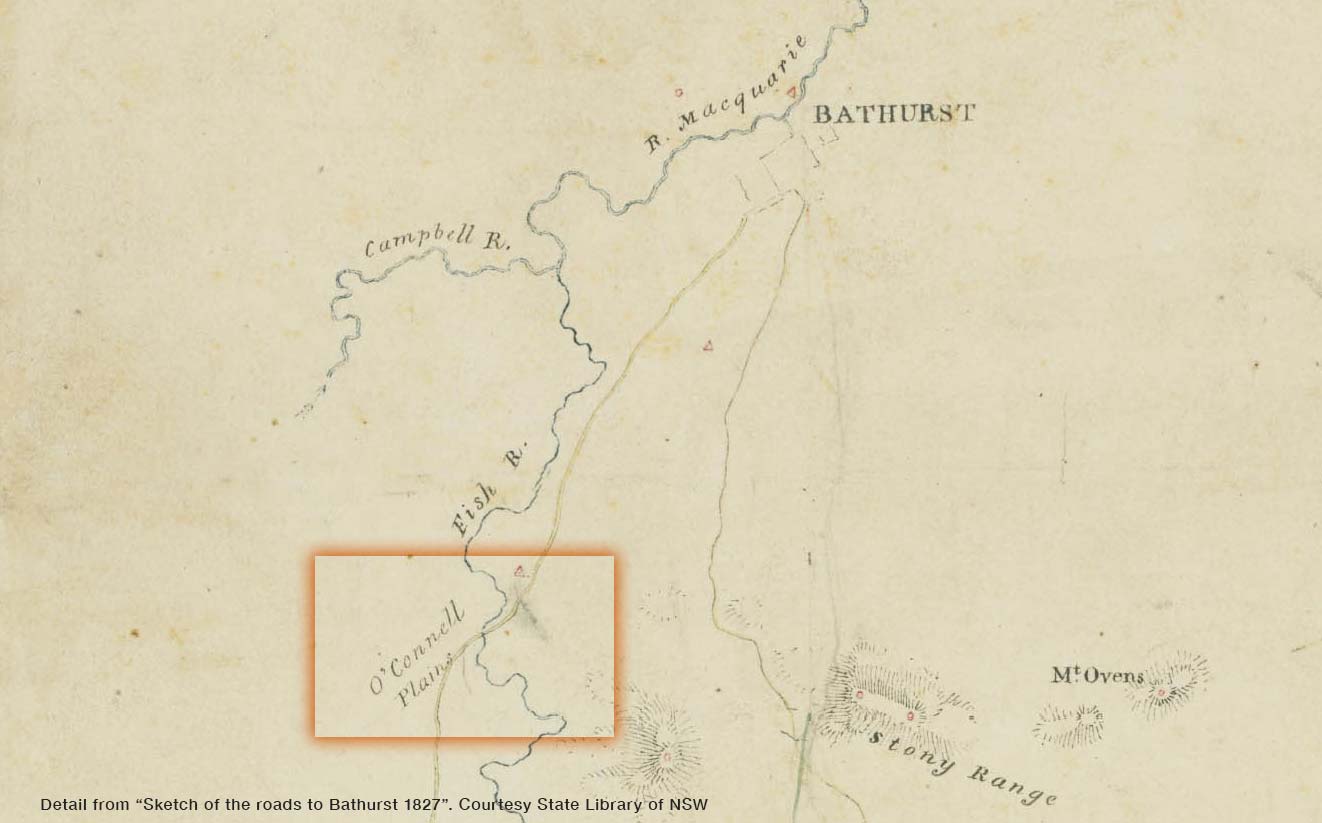O'Connell stands at the gateway to central west NSW along the line the main western road connecting Sydney with Bathurst followed in the period c.1822–1834.
The historic settlement of O’Connell was classified as a conservation area by the National Trust of Australia (NSW) in 1974 and in 1978 it was listed on the Heritage Register of the National Estate.
It is protected by its listing as a heritage item on the Oberon Council Local Environment Plan. The National Trust listed O’Connell ANZAC Memorial Avenue of Desert Ash trees links several groups of historic buildings within the O’Connell Conservation Area.

A feature of O'Connell's historic heritage is its array of earth buildings dating back to the early - mid 1800s. Some of these properties are situated either centrally in the heart of O'Connell or else located just a short scenic drive away.
The map below shows the location of five of O'Connell's most notable and easily appreciated earth buildings. While these are all located on private property, you can get a good appreciation of them from the adjacent road verges.
Follow the links on the map for more detailed information on each of these heritage structures.






Colonial settlement of O’Connell followed the 1814–1815 construction of William Cox’s Road from the Nepean River at Penrith to the Macquarie River at Bathurst.
It was the first constructed road out of Sydney and was built by 30 convicts in six months. The route passed through O’Connell as it followed the first European incursion into Wiradjuri land by Surveyor General Evans and his naming of O’Connell Plains on 9th December 1813.
O’Connell became an important staging post along the beaten track to Bathurst, Australia’s first inland European settlement. The Settlement of Bathurst was proclaimed by Governor Macquarie on 7th May, 1815.
The O’Connell Valley and environs are recognised as containing the greatest concentration of early earth buildings in Australia – rare remnants of Colonial days in a farming community.
The surviving structures, some of which date from the 1820s, demonstrate the resourcefulness and skills of the builders to successfully use earth as an affordable and durable construction element in an unfamiliar environment.
Centuries old traditional earth construction methods were used, familiar to the pioneers and convicts who transferred to Australia the individual building technology of their home Counties and villages of England, Scotland, Wales and Ireland.
The earliest settler’s first concern was to establish shelter for their families and animals. They had to build quickly and efficiently from whatever materials were at hand – earth, clay, shale and small stones, straw, grasses, manure and animal hair mixed, kneaded and trampled with water into a pliable muddy material to form solid walls. Rocks, bark, saplings and bush timbers were used in the foundations and structures of the buildings.
The use of earth as a building material was a practical and economical choice. Suitable timber was scarce on the pastoral plains and lightly wooded areas. Transport of building materials by bullock team and dray via the steep terrain of the Great Dividing Range to an isolated place was a major and expensive task.
The settlers found the ideal building material beneath their feet – earth!
Cultural and technology variations in building methods between regions of the settler’s homelands have contributed to a richness of vernacular earthen architecture in the O’Connell area. Intact examples are mostly of cob construction as well as daub combined with timber slab or pole and lathe.
These precious and rare historic earth buildings convey a story of our ancestors’ toil and are an important tangible link with bygone days of early European settled Australia. They satisfy a curiosity about the development of our culture and show the resilience of the early settlers in an age of self reliance, perseverance and optimism.









